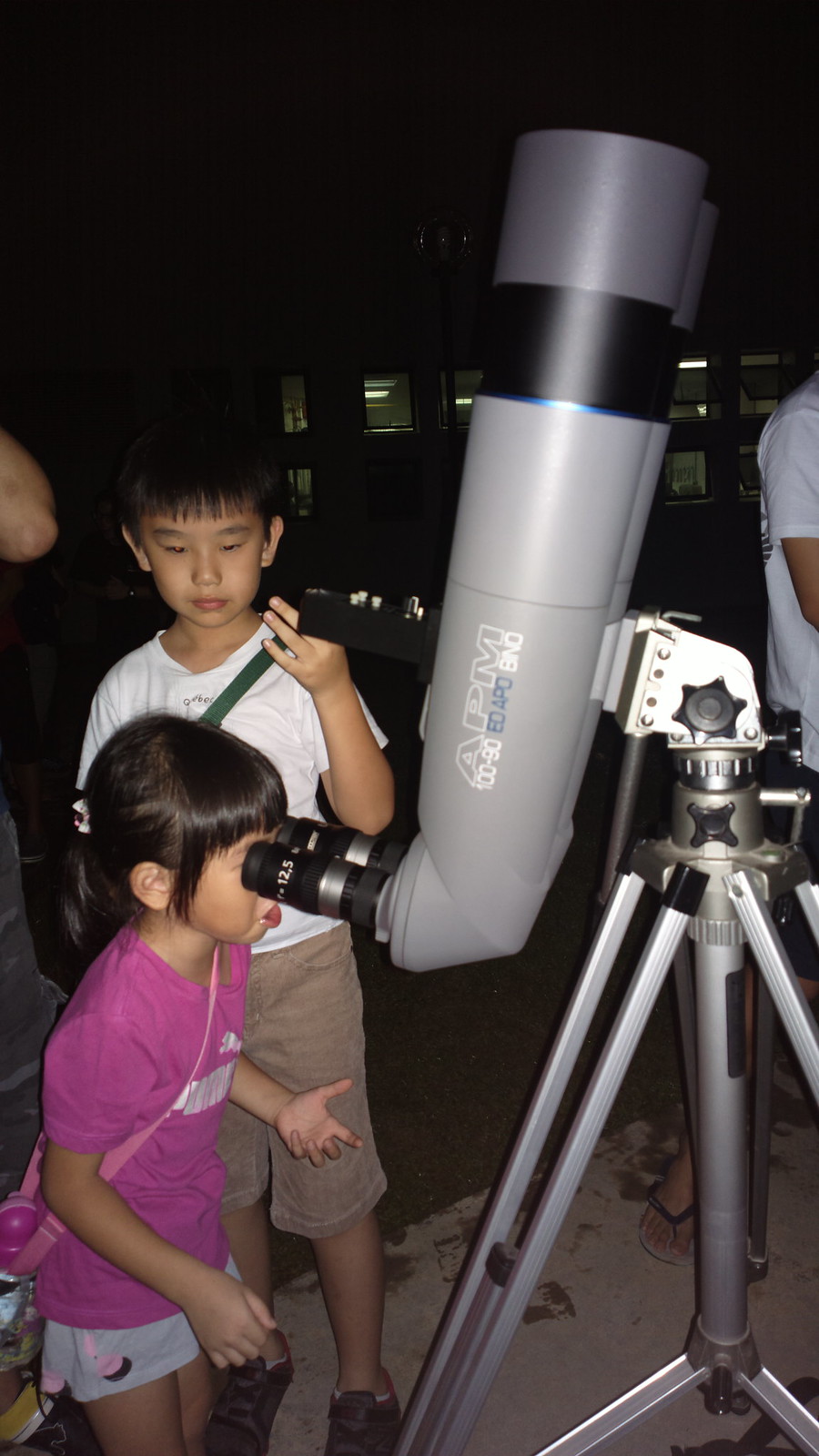rlow wrote:Just return from overnight observing at Sedili. I have interesting findings to report later.
Last Saturday 30 Jan 2016 my wife and I went for an overnight observation trip to our regular overnight stargazing site at Tanjung Sutera Resort in Sedili Besar, Malaysia. It is about 100km north of Singapore, a 1.5 hours drive away. On a night of clear transparency, the Milky Way is clearly seen naked eye stretching almost across the whole sky and the Coalsack Nebula is clearly defined.
That night the sky transparency was very good and this was our first time looking through the APM 100-90 ED APO bino under dark skies. I inserted and pair of Pentax XW 20mm and took a first look at M42 Orion Nebula almost overhead. Wow! ...the binocular sharpness and contrast is incredibly superb, and makes the view so spectacular! The XW20mm showed me an image that has sharpness, clarity, and high-contrast. The sharpness is out to about 75% to the edge only. The fieldstop is clearly defined and there is apparently no vignetting visible.
I realised that the XW20mm works well on the APM 100-90 ED APO bino. This is in line with the good comments made by Rich V, and others, saying that XW20mm is "ideal" or "good match" for the APM 100 ED APO bino. This is because when we view through a binocular or binoviewer, our eyes focus only on the central 58 degree portion of the field of view, which is sharp in the XW20mm. Beyond the 58 degrees the image is usually not sharply defined, unless you redirect your view towards one side. But it is tiring on both eyes to focus on the top or bottom of FOV, and even more tiring or almost impossible to view the extreme left or right edge of FOV. Hence, most of the time I just focus on the central 58 degrees and let the outer portion beyond the 58 degrees "frame" the view.
When I scan around the sky, I noticed the "false pupils" first highlighted by Mr Bill. The main one is the semi-circular chord of light similar in shape and position to the "chord-shaped false pupils" at 5 o'clock position in the exit pupil photos I posted earlier in this thread. It appears when a bright 1st magnitude star is hidden about 0.5 degrees beyond the fieldstop at the 11'oclock position of the left eyepiece. Those exit pupil photos I posted earlier were taken of the left eyepiece. For the right eyepiece, the "false pupils" are in the mirror-image position compared to the left eyepiece. Fainter ghost of the "chord-shaped false pupils" may appear at the 11 o'clock position if the bright star is hidden at the 5 o'clock position. There is also another artefact that looked like a tight double star that may appear under certain condition. These appeared when my eyes are slightly off-axis. They don't seem to be present on-axis. When a bright star is right at the edge of fieldstop, there is some veiling glare across the field. At first all these artefacts were a bit disconcerting when I scan around the sky, as the artefacts suddenly appear like a thin crescent moon or micro-meteor, but after a while I got used to it, ignored it, and just simply enjoy the high-contrast views. I realised that under urban conditions, these artefacts may not seem so obvious due to poorer image contrast, but it is still there.
I tried the Panoptic 24mm (just one piece) and the view didn't quite appeal to me, due to lower contrast, fuzzy fieldstop, and the vignetting and pin-cushion distortion around the edge. Stars are sharp almost to the edge of fieldstop. I see slight degradation of sharpness visible at the edge. The Panoptic 24mm is small and lightweight, and are a good match for Nagler 13mm and the other Type 6 Naglers. I plan to take a look with my friend's LVW22mm sometime this week, if the arrangement works out.
Next I tried the pair of Zeiss E-PL 10x/20 (25mm equivalent) microscope eyepiece with APM 1.25" adapter. Fantastic view, very sharp, with clarity and high contrast. Sharpness is almost to the edge, with slight degradation visible at the edge.The AFOV is not too wide but appears wider than the standard field of 50 degrees and quite comfortable, as I had attached the Baader winged rubber eyeguards. So different from the Panoptic 24mm.
Finally I tried the Zeiss Abbe Ortho-II 16mm pair and again I observe the similar clarity, sharpness and high-contrast similar to the Zeiss E-PL 25mm and XW 20mm. Sharpness is almost to the edge, also with slight degradation visible at the edge, similar to the Zeiss E-PL 25mm.
I am borrowing from some of our Singastro friends a few eyepiece pairs to test on the APM 100-90 ED APO bino for the next Sedili overnight observing session this weekend 6-7 Feb 2016. The current eyepiece list to review comprise of LE30, RKE28, Zeiss 25mm, XW20, Radian18, ZAO-II 16, Radian14, ZAO-II 10, Radian8, XW7, ZAO-II 6, ZAO-II 4.

